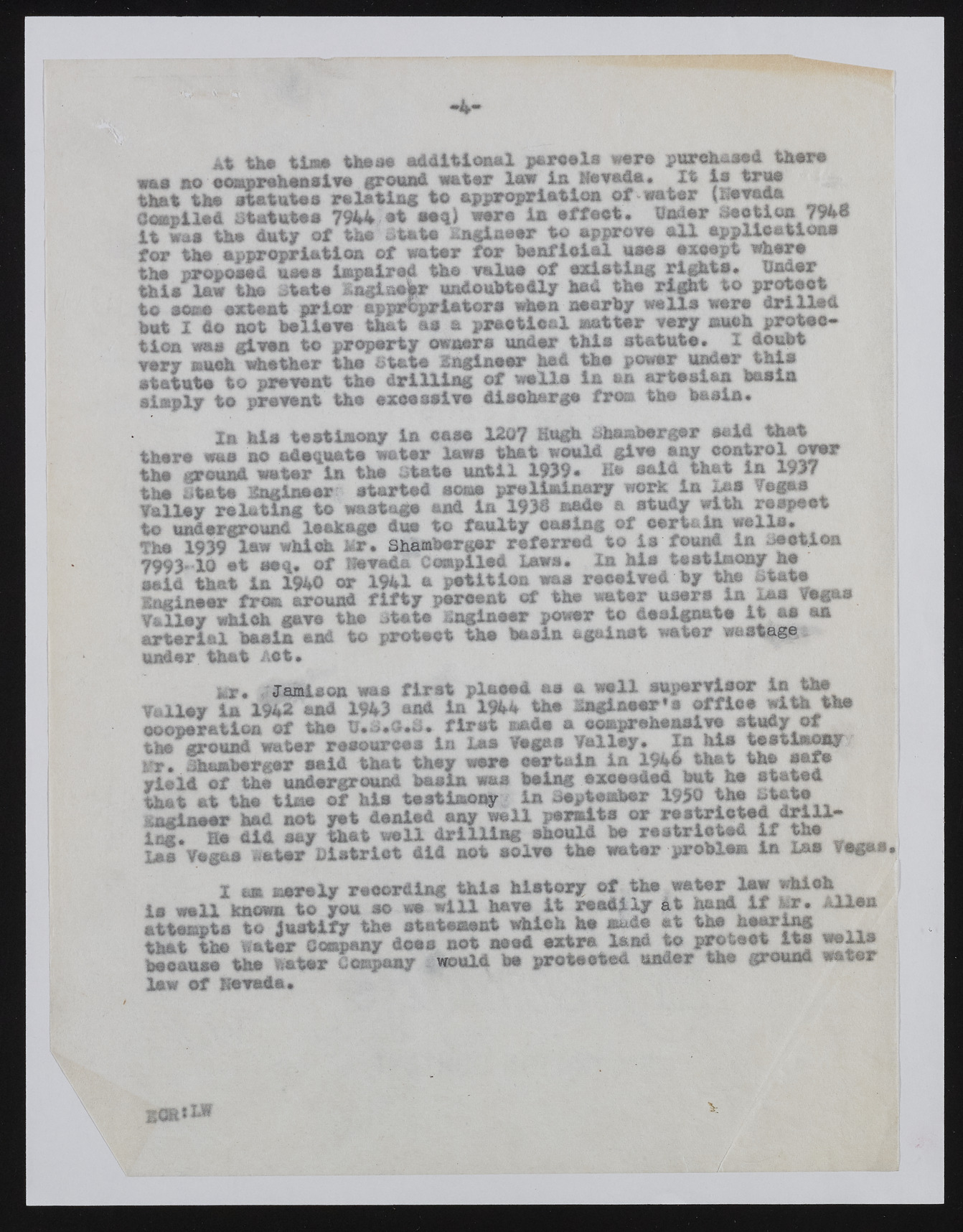Copyright & Fair-use Agreement
UNLV Special Collections provides copies of materials to facilitate private study, scholarship, or research. Material not in the public domain may be used according to fair use of copyrighted materials as defined by copyright law. Please cite us.
Please note that UNLV may not own the copyright to these materials and cannot provide permission to publish or distribute materials when UNLV is not the copyright holder. The user is solely responsible for determining the copyright status of materials and obtaining permission to use material from the copyright holder and for determining whether any permissions relating to any other rights are necessary for the intended use, and for obtaining all required permissions beyond that allowed by fair use.
Read more about our reproduction and use policy.
I agree.Information
Digital ID
Permalink
Details
Member of
More Info
Rights
Digital Provenance
Publisher
Transcription
•4* At the time additionaX parcels were puwkotd there «&« bo comprehensive ground water law ta Nevada. It is true that the statutes relating to appropriation of water (Nevada Compiled statutes 7944 at seq) ware la affect. Under injection 7948 it was the duty of the iitate Engineer to approve all applications for tka appropriation of water for benflelal wees except where tfie proposed asee impaired the value of existing rights. Under_ this law the Etate hnginmitr undoubtedly had the right to protect to seas extent prior approprlators when nearby weHs were drilled tat I do sot believe that as a praetieal natter very aach protection was gives to property owners under this statute. 1 doubt very much whether the State Engineer had tha power under this statuta to prevaat the drilling of wells is as artesian basis simply to prevent the excessive discharge from tha basin. la his testimony in case 1W Hugh Ehsaberger said that there was so adequate water laws that would give ^ ®®a*r0}J?J*r the ground water in the State until 1939* K* said that in 1937 tha Stats Engineer started sons preliminary work in las Vega* Valley relating to wastage and in 1938 made a study with respect to undarground leakage due to faulty easing of certain wells. The 1939 law which Mr* Shamberger referred to is found in section 7993*-10 et sea. of Hevada Compiled laws. In his testimony he said that in 1940 or 1941 a petition was received hy the State^ imzineer from around fifty percent of the water users in las Vegas Talley which gave the ~>t«te Engineer power to designate it an an arterial haaia and to protect tha basin against water wastage under that Act. j,r# Jamison was first placed as a well supervisor in tha Valley la 1942 and 1943 and in 1944 the Engineer's office with the cooperation of the D.E.C.3. first mads a comprehensive study of the ground water resources in Las Vegas Valley* Is his testimony rr. Jhamberger said that they were certain in 1946 that the safe yield of the underground basin was bsing exceeded but he stated that at the time of his testimony in September 1950 the _ Engineer had not yet denied any well permits or restricted orill- inn. He did say that well drilling should be restricted if the Xbs Vegas aeter District did not solve the water problem in Las Vegas. 1 am merely recording thin history of the water law which is wall known to you so we will have it readily at hand if fer. ^llen attempts to justify the statement whieh he made at the hearing that the water Company does not need extra land to protect its wells because the nater Company would be protected under the ground water law of iiev&da. KORlLH v

